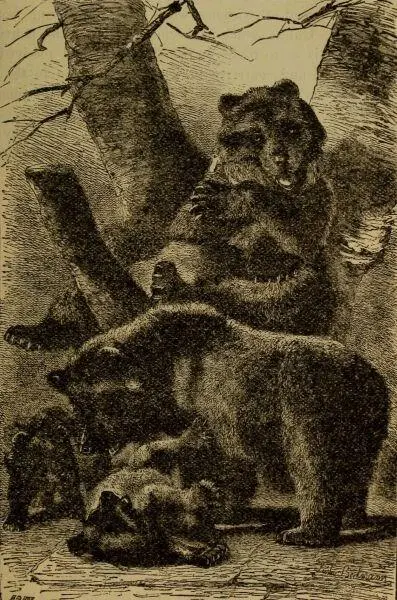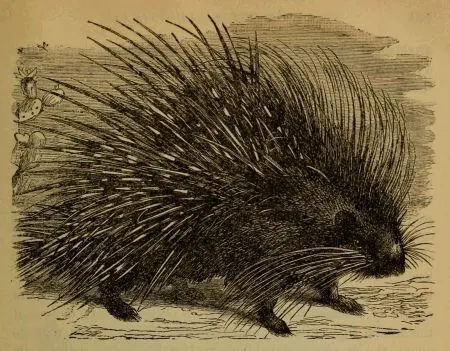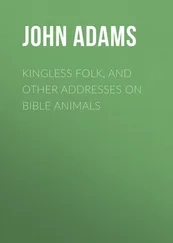John George Wood - Story of the Bible Animals
Здесь есть возможность читать онлайн «John George Wood - Story of the Bible Animals» — ознакомительный отрывок электронной книги совершенно бесплатно, а после прочтения отрывка купить полную версию. В некоторых случаях можно слушать аудио, скачать через торрент в формате fb2 и присутствует краткое содержание. Жанр: foreign_prose, foreign_religion, Философия, foreign_psychology, foreign_antique, на английском языке. Описание произведения, (предисловие) а так же отзывы посетителей доступны на портале библиотеки ЛибКат.
- Название:Story of the Bible Animals
- Автор:
- Жанр:
- Год:неизвестен
- ISBN:нет данных
- Рейтинг книги:4 / 5. Голосов: 1
-
Избранное:Добавить в избранное
- Отзывы:
-
Ваша оценка:
- 80
- 1
- 2
- 3
- 4
- 5
Story of the Bible Animals: краткое содержание, описание и аннотация
Предлагаем к чтению аннотацию, описание, краткое содержание или предисловие (зависит от того, что написал сам автор книги «Story of the Bible Animals»). Если вы не нашли необходимую информацию о книге — напишите в комментариях, мы постараемся отыскать её.
Story of the Bible Animals — читать онлайн ознакомительный отрывок
Ниже представлен текст книги, разбитый по страницам. Система сохранения места последней прочитанной страницы, позволяет с удобством читать онлайн бесплатно книгу «Story of the Bible Animals», без необходимости каждый раз заново искать на чём Вы остановились. Поставьте закладку, и сможете в любой момент перейти на страницу, на которой закончили чтение.
Интервал:
Закладка:
ON THE WATCH.
Though not generally apt to attack mankind, it will do so if first attacked, and then becomes a most dangerous enemy. See, for example, that most graphic passage in the book of the prophet Amos, whose business as a herdsman must have made him conversant with the habits, not only of the flocks and herds which he kept, but of the wild beasts which might devour them:—"Woe unto you that desire the day of the Lord! to what end is it for you? the day of the Lord is darkness, and not light. As if a man did flee from a lion, and a bear met him; or went into a house, and leaned his hand on the wall, and a serpent bit him." (v. 19.)
Another reference to the dangerous character of the Bear is made in 2 Kings ii. 23, 24, in which is recorded that two she-bears came out of the wood near Bethel, and killed forty-two of the children that mocked at Elisha.
As the Bear is not swift of foot, but rather clumsy in its movements, it cannot hope to take the nimbler animals in open chase. It prefers to lie in wait for them in the bushes, and to strike them down with a sudden blow of its paw, a terrible weapon, which it can wield as effectively as the lion uses its claws. An allusion to this habit is made in the Lamentations of Jeremiah (iii. 10), "He was unto me as a bear lying in wait, and as a lion in secret places."
Harmless to man as it generally is, there are occasions on which it becomes a terrible and relentless foe, not seeking to avoid his presence, but even searching for him, and attacking him as soon as seen. In the proper season of the year, hunters, or those who are travelling through those parts of the country infested by the Bear, will sometimes find the cubs, generally two in number, their mother having left them in the den while she has gone to search for food. Although they would not venture to take the initiative in an attack upon either of the parents, they are glad of an opportunity which enables them to destroy one or two Bears without danger to themselves. The young Bears are easily killed or carried off, because at a very early age they are as confident as they are weak, and do not try to escape when they see the hunters approaching.
The only danger lies in the possibility that their deed may be discovered by the mother before they can escape from the locality, and, if she should happen to return while the robbers are still in the neighbourhood, a severe conflict is sure to follow. At any time an angry Bear is a terrible antagonist, especially if it be wounded with sufficient severity to cause pain, and not severely enough to cripple its movements. But, when to this easily-roused ferocity is added the fury of maternal feelings, it may be imagined that the hunters have good reason to fear its attack.

SEEKING AN OUTLOOK.
To all animals that rear their young is given a sublime and almost supernatural courage in defending their offspring, and from the lioness, that charges a host of armed men when her cubs are in danger, to the hen, which defies the soaring kite or prowling fox, or to the spider, that will give up her life rather than abandon her yet unhatched brood, the same self-sacrificing spirit actuates them all. Most terrible therefore is the wrath of a creature which possesses, as is the case of the Bear, the strongest maternal affections, added to great size, tremendous weapons, and gigantic strength. That the sight of a Bear bereaved of her young was well known to both writers and contemporary readers of the Old Testament, is evident from the fact that it is mentioned by several writers, and always as a familiar illustration of furious anger. See for example 2 Sam. xvii. 8, when Hushai is dissuading Absalom from following the cautious counsel of Ahithophel, "For thou knowest thy father and his men, that they be mighty men of war, and they be chafed in their minds as a bear robbed of her whelps in the field." Solomon also, in the Proverbs (xvii. 12), uses the same image, "Let a bear robbed of her whelps meet a man, rather than a fool in his folly."
When the Bear fights, it delivers rapid strokes with its armed paw, tearing and rending away everything that it strikes. A blow from a bear's paw has been several times known to strip the entire skin, together with the hair, from a man's head, and, when fighting with dogs, to tear its enemies open as if each claw were a chisel.
Bears are capable of erecting themselves on their hinder limbs, and of supporting themselves in an upright position with the greatest ease. When attacked in close combat, they have a habit of rearing themselves upon their hinder feet—a position which enables them to deliver with the greatest effect the terrific blows with their fore paws, upon which they chiefly rely in defending themselves.
With fearful ingenuity, the Bear, when engaged with a human foe, directs its attack upon the head of its antagonist, and, as previously stated, has been known to strike off the entire scalp with a single blow.

A FAMILY-PARTY.
A hunter who had the misfortune to be struck down by a Bear—and the singular good fortune to afterwards escape from it—says, that when he was lying on the ground at the mercy of the angry beast, the animal, after biting him upon the arms and legs, deliberately settled itself upon his head and began to scarify it in the fiercest manner, leaving wounds eight and nine inches in length.
Bears are the more terrible antagonists from their extreme tenacity of life, and the fearful energy which they compress into the last moment of existence, when they are suffering from a mortal wound. Unless struck in the heart or brain, the mortally-wounded Bear is more to be feared than if it had received no injury whatever, and contrives to wreak more harm in the few minutes that immediately precede its death, than it had achieved while still uninjured.
Many a hunter has received mortal hurts by incautiously approaching a Bear, which lay apparently dead, but was in reality only stunned.

THE PORCUPINE
Presumed identity of the Kippôd with the Porcupine—Habits of the Porcupine—the common Porcupine found plentifully in Palestine.
Although, like the hedgehog, the Porcupine is not mentioned by name in the Scriptures, many commentators think that the word Kippôd signifies both the hedgehog and Porcupine.
That the two animals should be thought to be merely two varieties of one species is not astonishing, when we remember the character of the people among whom the Porcupine lives. Not having the least idea of scientific geology, they look only to the most conspicuous characteristics, and because the Porcupine and hedgehog are both covered with an armature of quills, and the quills are far more conspicuous than the teeth, the inhabitants of Palestine naturally class the two animals together. In reality, they belong to two very different orders, the hedgehog being classed with the shrew-mice and moles, while the Porcupine is a rodent animal, and is classed with the rats, rabbits, beavers, marmots, and other rodents.
It is quite as common in Palestine as the hedgehog, a fact which increases the probability that the two animals may have been mentioned under a common title. Being a nocturnal animal, it retires during the day-time to some crevice in a rock or burrow in the ground, and there lies sleeping until the sunset awakens it and calls it to action. And as the hedgehog is also a nocturnal animal, the similarity of habit serves to strengthen the mutual resemblance.
Читать дальшеИнтервал:
Закладка:
Похожие книги на «Story of the Bible Animals»
Представляем Вашему вниманию похожие книги на «Story of the Bible Animals» списком для выбора. Мы отобрали схожую по названию и смыслу литературу в надежде предоставить читателям больше вариантов отыскать новые, интересные, ещё непрочитанные произведения.
Обсуждение, отзывы о книге «Story of the Bible Animals» и просто собственные мнения читателей. Оставьте ваши комментарии, напишите, что Вы думаете о произведении, его смысле или главных героях. Укажите что конкретно понравилось, а что нет, и почему Вы так считаете.












